Once you learn to decoy wary ducks you will be ready for a majority of waterfowl hunting days during the season. There’s only one opening weekend per season where the local birds will land right in your decoys. After that, only a few days provide the right wind and weather to move migratory birds into your area.
You can’t always go out during the best days so you’re often stuck with the majority of days that present you with challenges: light winds, sunny conditions, wary ducks.
Too Long, Didn’t Read (TLDR)
This is a long post, so if you’re simply looking for ideas decoy spreads, scroll down for the diagrams below and get blown away by my illustrative aptitude. However, most of this advice applies to any decoy spreads you create. Trying to decoy wary ducks and lure them into a spread will likely account for much of your waterfowl hunting time. If you’re new to the sport it’s worth the read.
Why are the Ducks Decoy Shy?
There are a couple of reasons why birds in your area are wary of decoys. First, they may be local birds that have been shot at time and again on the ponds you’re hunting. These, to me, are the hardest birds to hunt because they know blind locations and have seen it all. If you plan to hunt a public area and the weather has been pretty stable, then this is what you often will find. In this case, you’re in for a tough day.
On the other hand, you may be shooting at migratory birds that are new to the area. They have probably been shot at over decoys and are now pretty wary of decoy spreads that are static and unrealistic. However, you may have the advantage in that the birds won’t know the locations of the blinds. These birds will be a little easier to manipulate and offer you better chances of success.
Check the Weather and Wind
If you have had stable weather for a few days, with blue skies and few changes in temperature, then it’s likely you’ll be hunting local birds. This can make for tough hunting and it will be even more important that you are ready to set up for very wary ducks that will try to avoid decoys and perhaps your blind entirely.
If, however, you’re hunting during a day with a storm front moving in, especially one from the North, then you likely will see migratory birds pushing through your hunting area. While wary, they also will be weary from flying and will be more likely to land closer to decoys. This generally holds true if you’re hunting during a storm or the day after one. A cold, cloudy day with wind, a little rain, or maybe some snow flurries should get your heart racing. And always remember that the wind is your friend, especially when you are trying to decoy wary ducks.
Check Your Blind Location and Direction
In some cases, you may have a good idea about the blind you will be hunting. Or, in the case of lotteries, your place in line will dictate what you get. Regardless, if you have a choice, consider three major issues when choosing your blind.
Wind: First, consider the wind. An ideal wind will be blowing from 10-25mph from directly behind the blind. This will insure the birds will be landing, feet down, right at you, presenting the easiest shots. If that’s not possible, then choose a blind that has a crosswind. The last thing you want in windy conditions are winds that are blowing right into your face.
Sun: Second, if the wind is light, think about the location of the sun for most of the day. I would avoid blinds where I am looking into the sun. It’s harder to shoot and the sun can illuminate your position and movement if it’s out in front of you, versus behind you.
Water: Finally, what’s the water like around the blind? During some parts of the season, the water may be too shallow or in some cases too deep for you to navigate. If it’s a windless, cloudy day I would go for a blind on a point or one surrounded by water versus ones in a cove or on the shore. These types of blinds give you more options to set up and make adjustments.
Scout the Area You Plan to Hunt and Make Adjustments
If you can, go out to the hunting area or at least to similar water in the area and look for how the ducks are behaving while they are on the water. Are they resting in large groups on the middle of the water? Are they sitting in the weeds or along the shore? Are they divers in singles or in pairs feeding? You will want to pay attention especially to how close the ducks are to one another. A simple 10-minute scouting trip can help inform your decisions around how to tweak your spread for success when you want to decoy wary ducks.
Check Your Decoys
This is another area where I see new hunters struggle.
Variety is Important
Not every pond or swamp in America is loaded with fat, corn-fed mallards. You’re more likely to find a mix of dabblers and divers. Even if you are targeting only greenheads, you still will want to sprinkle other birds in your spread. If you don’t know which species frequent your area, check with your local outfitters for ideas on which ones to add.
You may want to add at least teal and widgeon, which are common. Then we add a few goose floaters. If we have them, I like to add a few divers to our mix, since we often see them. In our area, ringnecks are especially good because they have black and white contrasting colors, which can be seen from long distances. And, if it’s a diver kind of day, a strap full of ringnecks is better than nothing.
Motion Can Help (and Hurt)
Finally, I like to do things that add motion to our decoys. If it’s not a windy day I like to simply tie a tangle-resistant cord to one of the decoys so we can put some ripples on the water during slow days. When hunting mallards, we will also try to deploy a pull-string motion decoy.
If there’s wind and we’re hunting mallards we like to take a wind-driven motion decoy. But I don’t use either of these close to where I expect birds to land. The spinner decoys can flare birds once they get close so choose their locations so they don’t interfere with the flight paths of incoming ducks.
Mind the Direction the Decoys Face
This is a finer point, but one I like. Generally decoys will orient themselves so they point into a stronger wind. Even if you have a light wind, try to get your decoys to face into the wind. This is relevant because ducks will take off into the wind to provide lift more quickly. Also, since I know ducks often don’t like to fly over decoys, I try to position decoys so they are not facing the landing zone.
Examples of Spreads to Decoy Wary Ducks
The Basic Theory of Defensive Decoying
I base my decoy spreads on a simple idea: ducks looking for landing spots do not seem to like to fly over decoys. This is especially true of wary ducks, which will be curious enough to approach your decoy spread then flare at the last second. And they always seem to flare right before you have a chance at them.
So when hunting these wary ducks I like to do something we call defensive decoying. This basically means that we are trying position our decoys in water where we don’t want the ducks to land while simultaneously giving them a landing zone that is close enough, based on the conditions, for us to take a quality shot within 20-30 yards or less.
I’m also mindful to give the ducks close-in flying lanes in case they change their minds and flare – or, honestly, in case we miss them entirely.
So with all these things in mind, below is how I would set each of these blind types based on a going-away wind and a crosswind. If there’s no wind, then start the day with the going-away wind and adjust based on how you see the ducks behaving.
Blind on a Shoreline
I find shoreline blinds can be the biggest challenge in most duck hunting conditions. They work fine when birds want to decoy, but when they don’t the shoreline offers very little in incentive. Birds won’t seek out the shoreline like they will a cove. And they won’t have to choose an avoidance route like they will for a blind on a point. But the reality is you never really know what birds will want from day to day or even hour to hour.
If you are on open water then a defensive spread is going to be much more difficult to execute. The type of bird you are hunting will be curious about your spread but will not want to land in it. So your challenge will be to design a spread that is close enough to the blind so you get a shot but not so far away as ducks will be landing well beyond your shooting zone. This is a key point. I’ve noticed that curious birds will drop about 10-15 yards off the tip of the spread, so you will want to position them close enough to shore to get a shot.
It can be tough so be prepared to make changes throughout the day based on the behavior of the ducks.
Blind on a Point
This is the most forgiving blind type as it offers the most flexible ways to hunt birds in the majority of conditions. Essentially, blinds on points offer two potential cove-like landing zones and also stick out into their flyways, forcing them to choose how to avoid the blind, point, and decoys. Provide wary birds with plenty of space near the blind to investigate the decoys and you stand a great chance at getting quality shots.
Blind in a Cove
This is the second easiest blind to choose in these conditions because if a bird swings into a cove to check it out, chances are it wants to land there. They don’t fly into coves for no reason. Your job in the cove is to stay still and present a spot near your blind where the birds can feel safe about landing. I find the defensive decoying works best in a cove and often will default to this kind of spread unless we see the birds are dropping right into the decoys.
Hunting Wary Ducks Without Decoys
Unless you are simply jump-shooting ducks I think decoyless hunting is simply making things really difficult on yourself. Part of the success (at least for me) is having the birds do something you planned for them to do. Everything I set up has a result in mind. I want the ducks to land in or fly over a particular spot, giving me the best opportunity of taking one down.
Without decoys you are literally leaving everything up to chance. You won’t be able to deny water away from you by loading it with decoys. You won’t be able to influence the flight patterns. Unless you are in a very predictable position, such as a hole that you opened in the ice of a pond or lake, you will be leaving everything entirely to chance. In short, you’re not really hunting.
I’ve also tried pulling decoys on days when nothing looks my way and have found that doesn’t help. If you are not where the ducks want to be, no amount of adjustments will help you.
Decoy Wary Ducks – The Last Word
I realize that all of the preceding info is a lot to think about and it may not all be relevant to your area, but I really believe if you sweat all the little things that you can learn to decoy wary ducks even on difficult days.
I use all of these spreads as starting points and expect to adjust them based on the behavior of the birds that day. I can tell you it is extremely satisfying to find the right secret for that day and start getting quality shots and makes all the effort worthwhile.
Then there are days when we set up for defensive decoying and find the birds are dropping right into the spreads. In those cases, we bring all the decoys in close the blind and feel fortunate that we’re in the right spot at the right time.

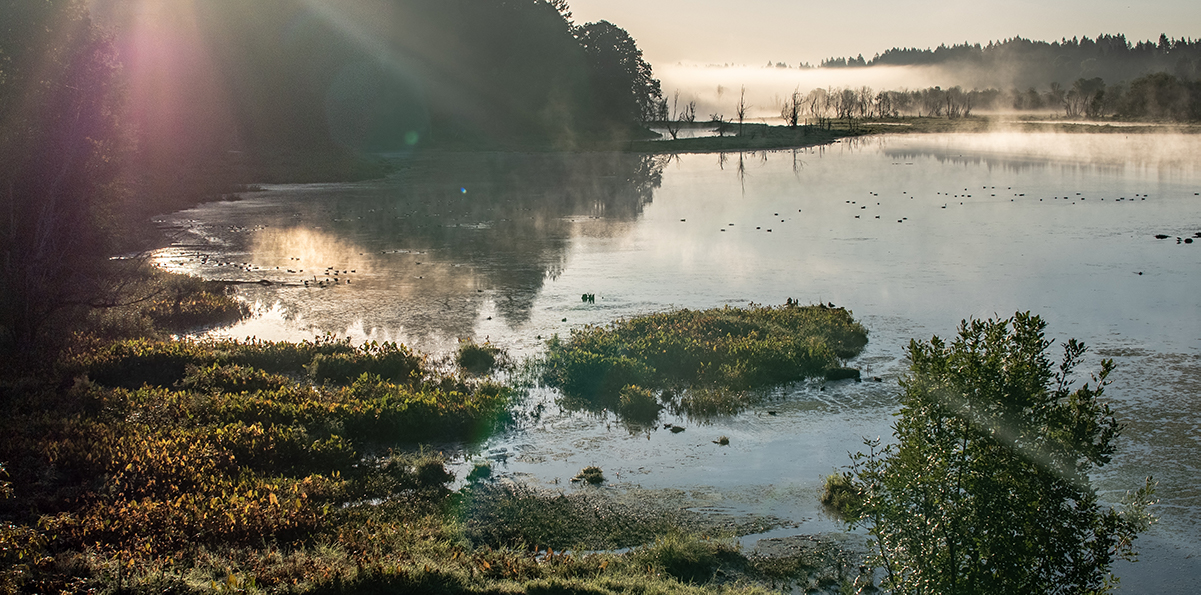
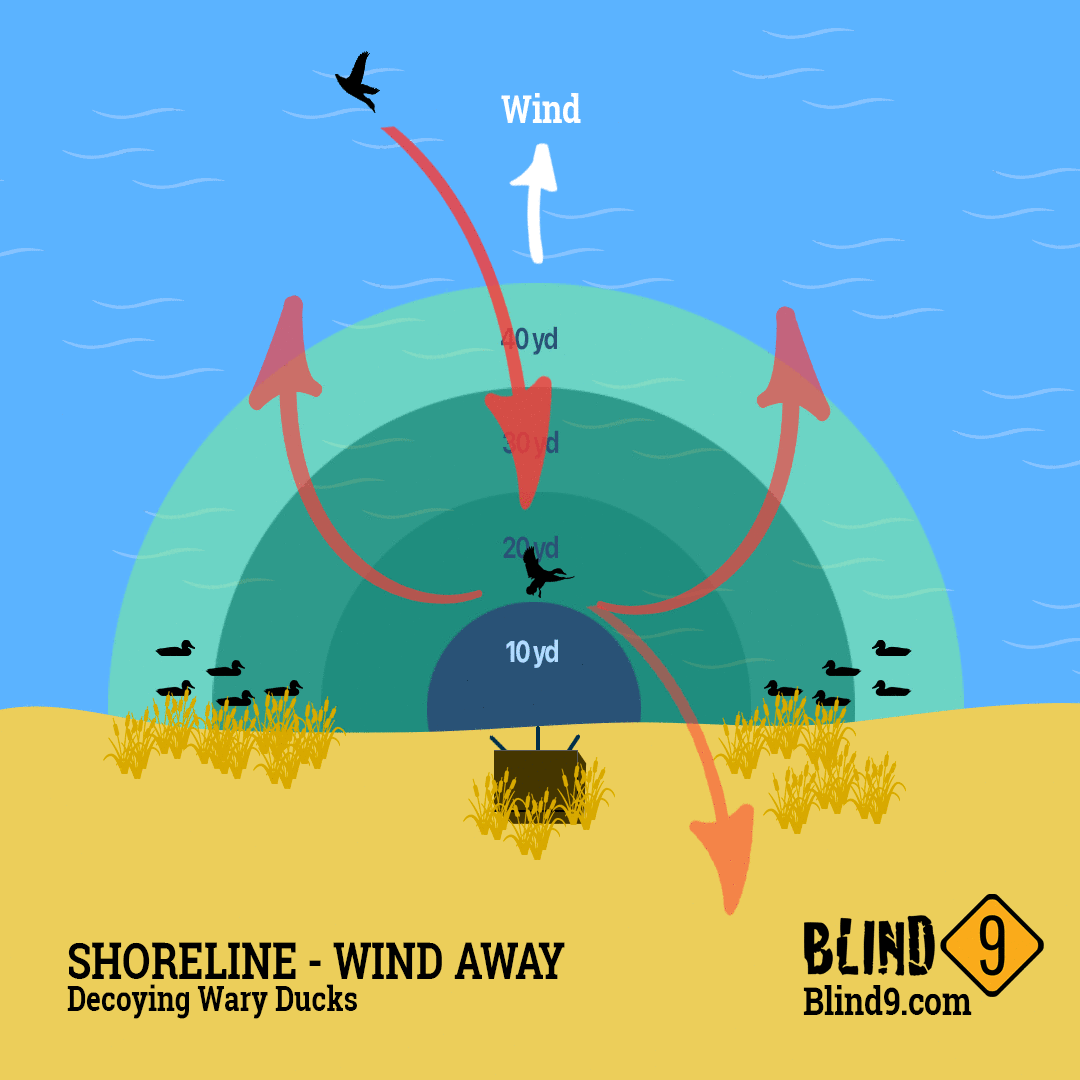
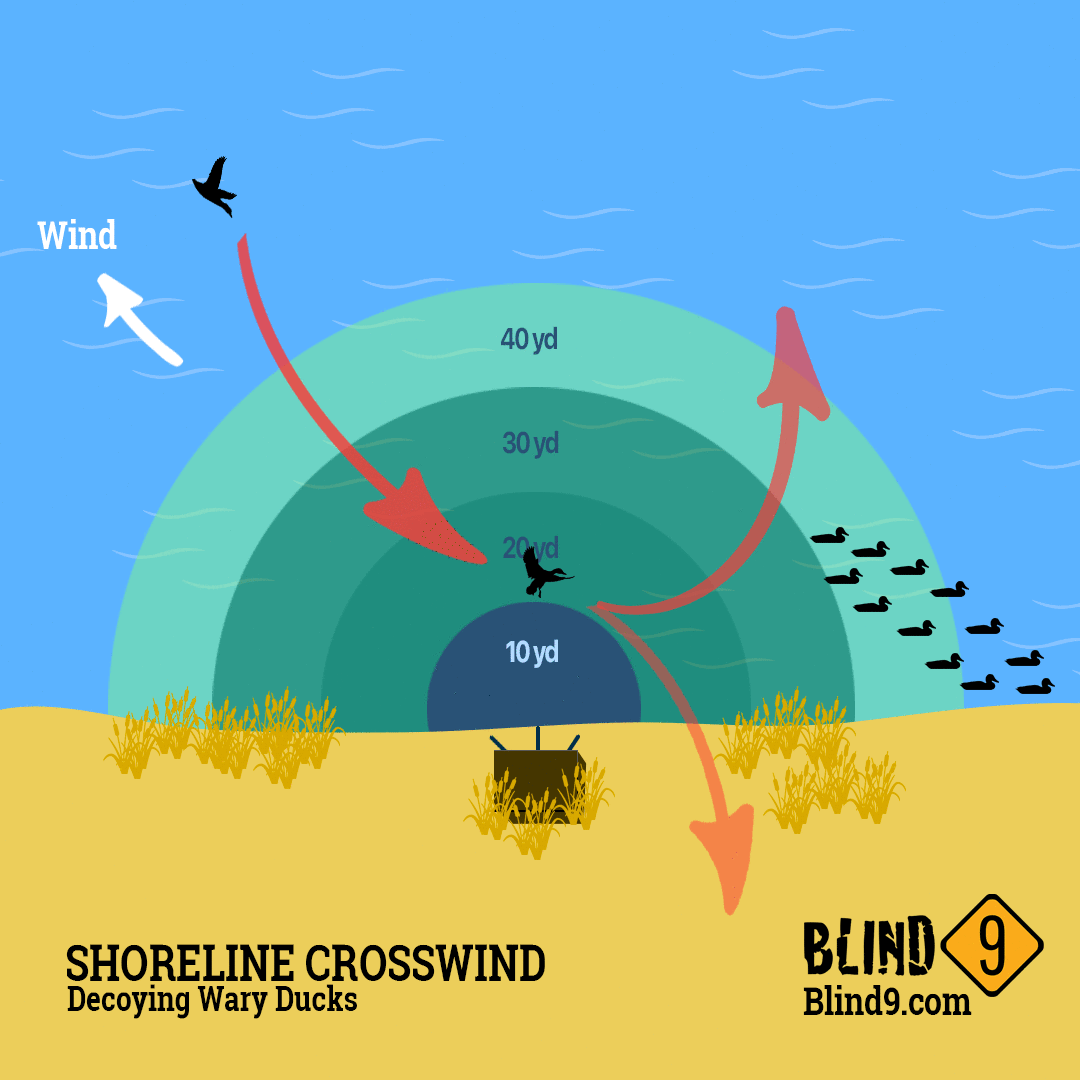
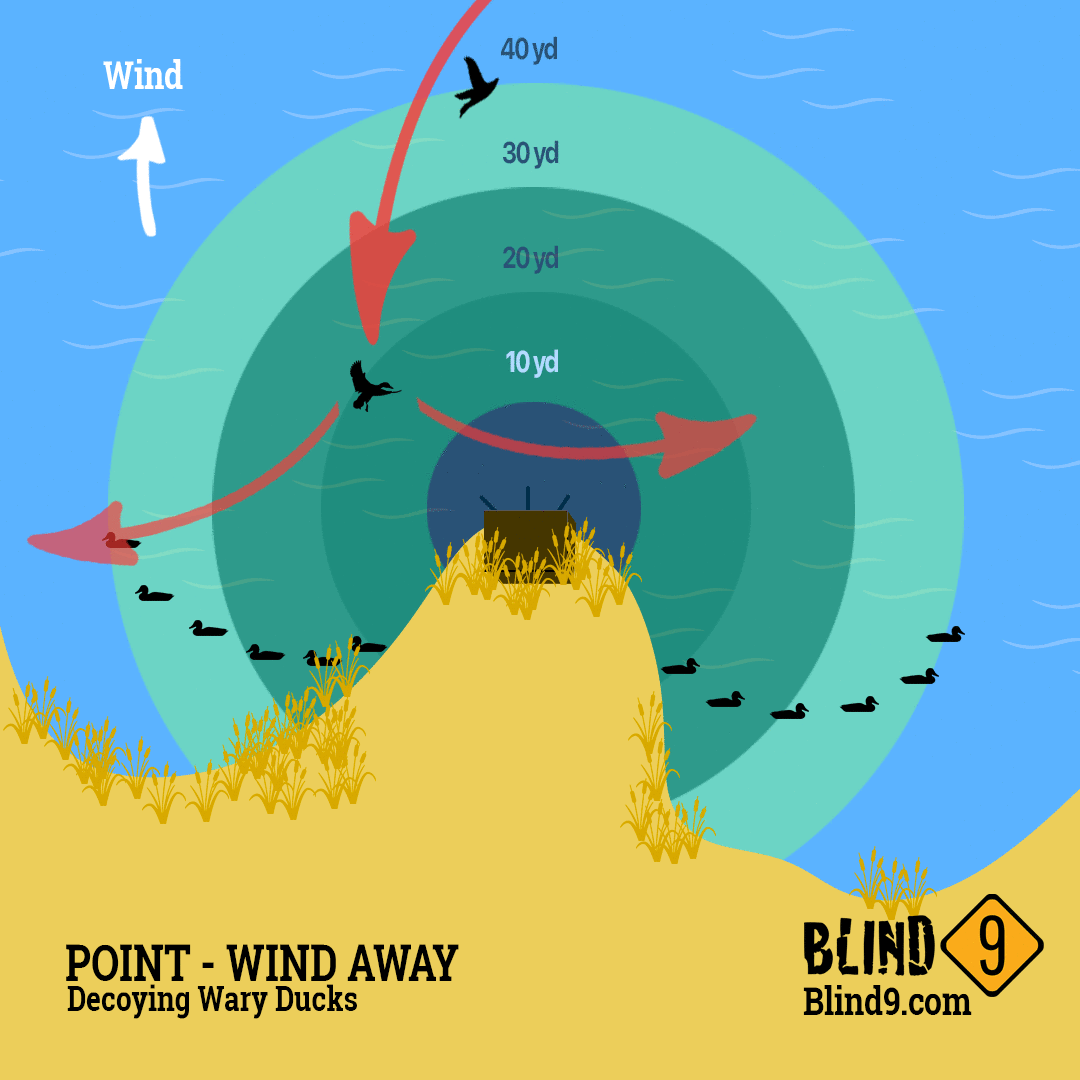

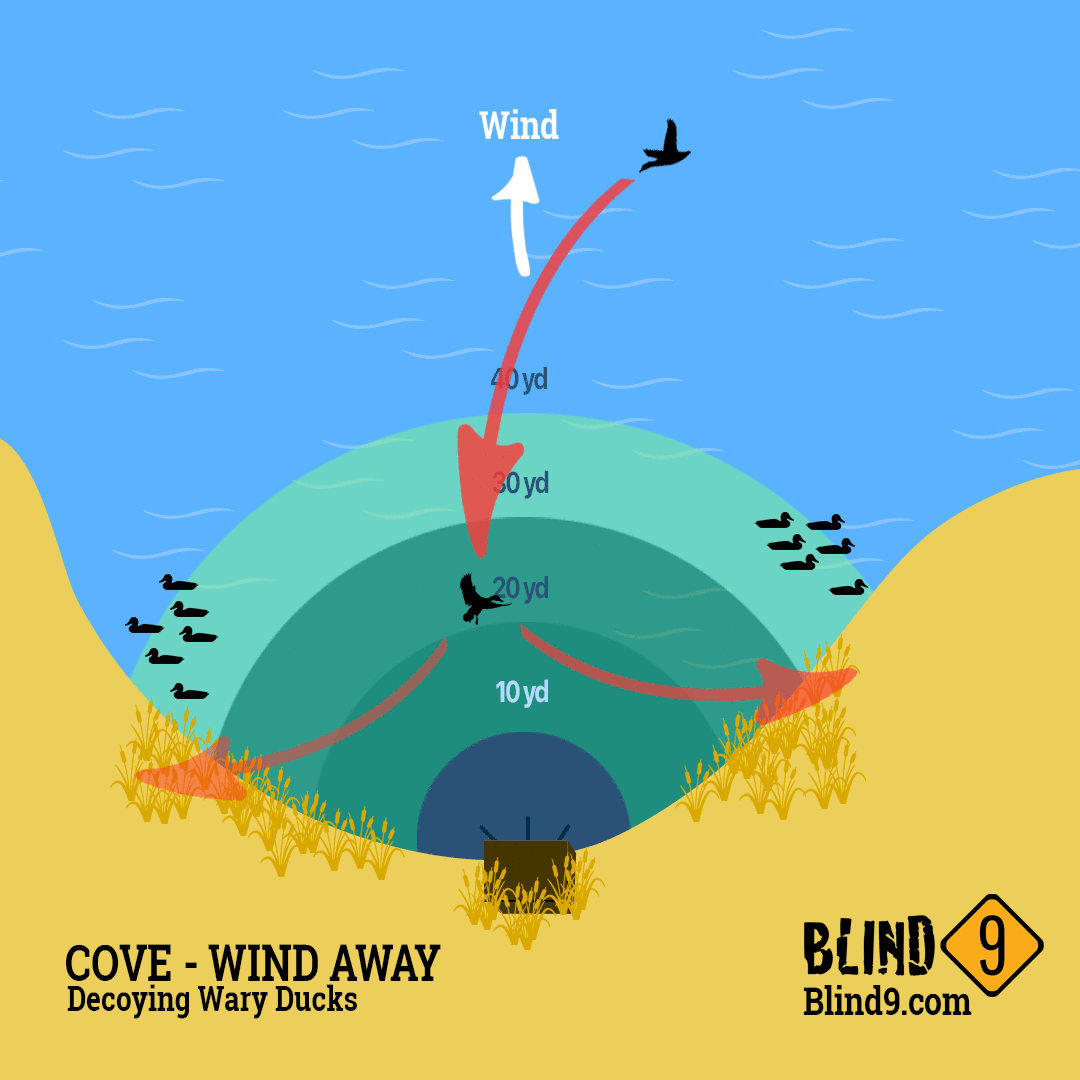
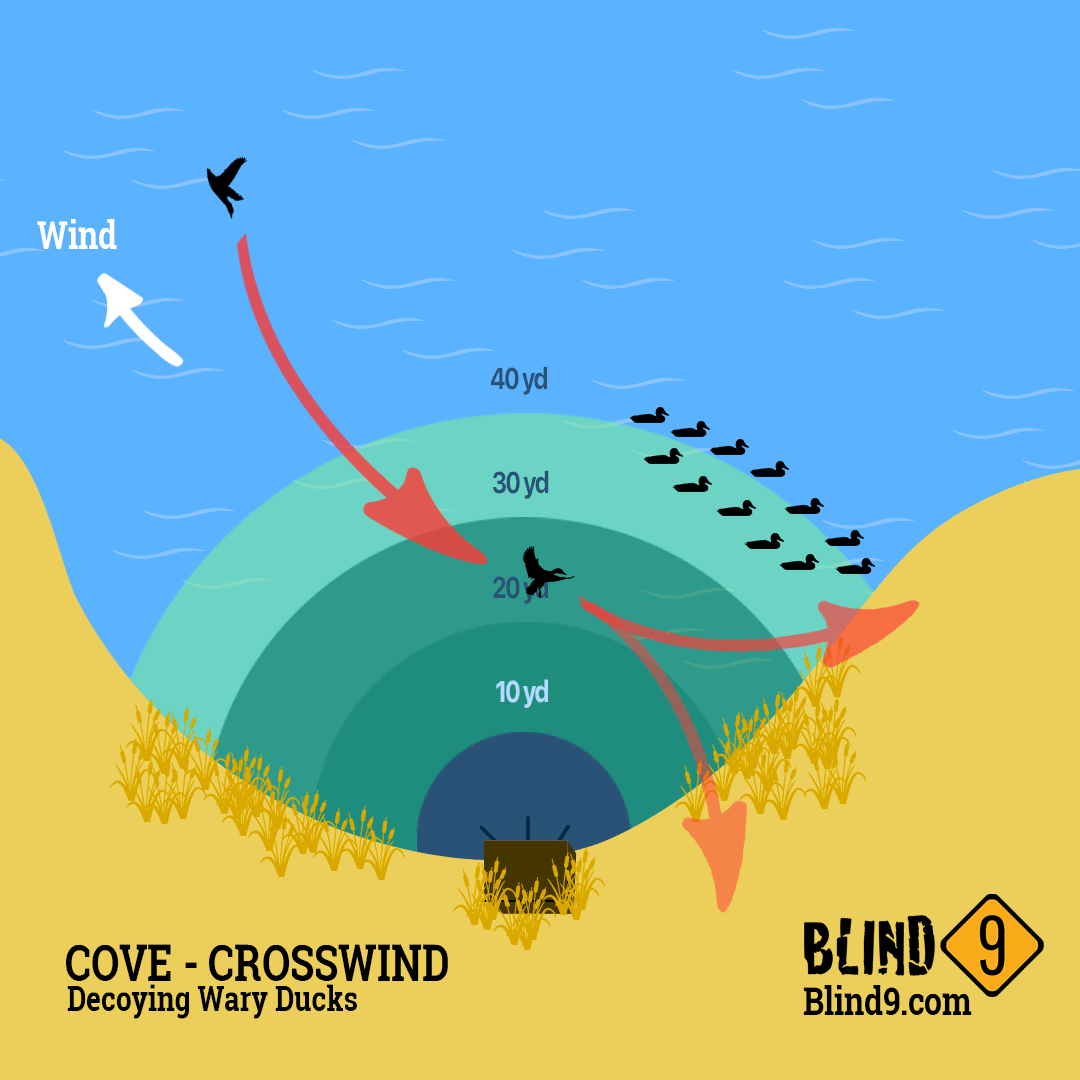
1 Comment. Leave new
[…] usually like to land in the wind (Blind9). That said, whenever the weather is windy, you’ll have to tweak your usual duck decoy […]